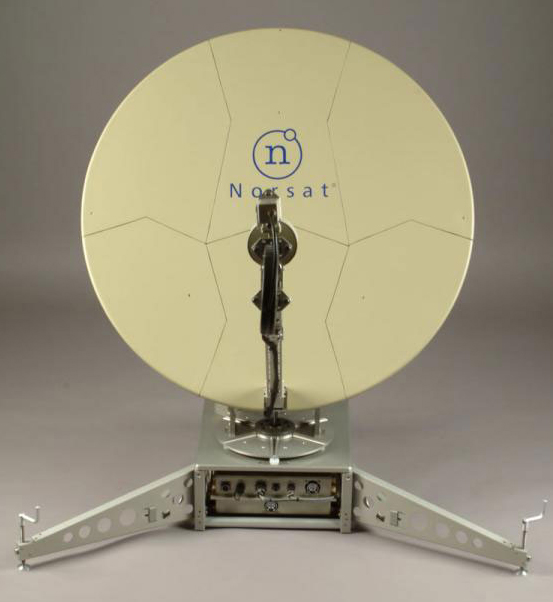Backpack, Backpack

When I was a kid in Brooklyn, we never carried backpacks to school. We had bookbags or even brief cases (plastic Samsonite). Sure, I had a backpack as a boy scout and I did find it convenient for hiking and exploring. But for school? We took public transportation. It was easier to let your book bag rest on the floor, between your feet, rather than taking out some 90-year-old woman while you turn around. In fact, I was six years old and getting on a public bus in Brooklyn — by myself. School was a mile away, too.
Things sure have changed since then. Every kid has a backpack now. One of today’s more popular pre-school cartoon characters, Dora the Explorer, has a talking backpack. Parents don’t let little kids out of their sight for a moment. Grown-ups now carry their laptops in backpacks to work. Hikers’ backpack are super high-tech: some generate electricity as you walk.
But by far the coolest is a complete satcom terminal — an ultra-portable from Norsat — that fits into two backpacks and can be checked as luggage on most commercial airlines:
The GLOBETrekker is particularly well suited for "grab-and-go" applications and "temporary situations" — wherein broadband communications need to be initiated quickly and on very short notice or on a temporary basis. Its ergonomically designed backpack and overall "quick-connect" design enables users to transport, assemble, operate and disassemble quickly and discreetly. This is particularly appealing to journalists, disaster relief agencies, the military and first responders — all of which are often given very short notice of an impending assignment. This is also of interest to companies seeking an emergency backup system or VIPs seeking to establish a reliable broadband connection while they are traveling.
The GLOBETrekker is equipped with sophisticated "built-in" intelligence. The GLOBETrekker’s Sensor Driven System Manager is housed in a single board computer, which acts as the nerve center of the entire system. It continuously monitors the internal environment of the system and automatically counters harsh weather elements (extreme temperatures, sand and humidity) by engaging built-in defenses.
This latest addition to Norsat’s product portfolio has been designed to withstand harsh transport and operating conditions. The GLOBETrekker sports three physical layers of protection including a hard shell exterior, shock absorbing foam inserts and shock-mounted baseband.
The GLOBETrekker supports data transmission rates of up to four megabits per second. It is capable of operating on multiple bands, including the Ku, Ka and X bands. The GLOBETrekker is a highly integrated system which includes a 1m carbon fiber antenna, RF electronics, motorized azimuth/elevation superstructure, motorized feed assembly, built-in inclinometer, compass, GPS and a baseband unit with a modem, spectrum analyzer, DVB-S receiver, Ethernet switch, DC-DC converter and shock protected chassis.

Pretty cool, ey? They just received a patent in Europe:
The European Patent Office notified the company that it intends to grant the patent for the technology, which reduces the weight and footprint of transmit reject filters, one of several elements of the RF transmit chain.
"This patent award is part of our broader and long-term strategy to establish a leadership role in the design, development and marketing of portable satellite terminals," Amiee Chan, president and CEO, Norsat International, said in a statement. "Our frequency selective surface waveguide filter, protected under this patent, allows the weight of transmit reject filters to be reduced 50-fold, significantly decreasing the occupied volume. This is a function that is especially useful for the next generation of milsatcom terminals."
The company could use some good news, given their stock price over the past few years. Good timing on their part, coinciding with the Global MilSatCom conference in London this week.

DOES THIS SYSTEM WORK IN HAWAII? IF SO, HOW MUCH DOES IT COST?
Yes, this system works anywhere there’s satellite coverage. Pricing depends on the configuration and you can find out more, directly from Norsat.